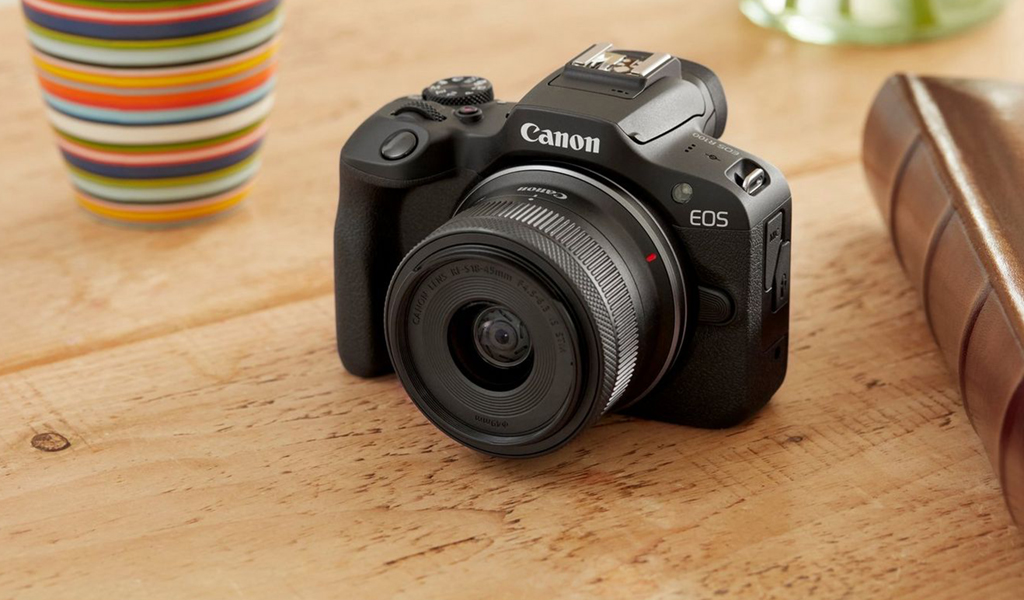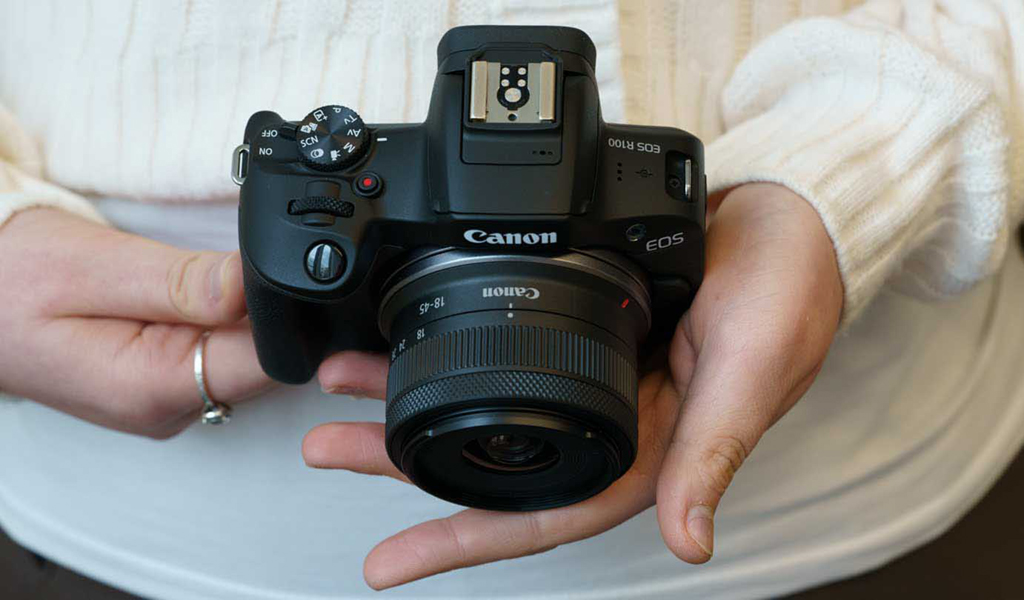
Canon is launching a new mirrorless camera in the EOS R100 to give new photographers a chance to learn the ropes. This camera is very much in line with the Canon Rebel series of DSLR cameras designed to cater to first-time users or those upgrading from smartphones. It’s considerably more affordable than other Canon models and a possibly a good place to start if you’re on a tighter budget.
To keep it affordable, Canon had to cut corners and leave out more advanced features—much like it always did with the Rebel cameras. You can still use the EOS R100 with all RF and RF-S lenses, as well as EF and EF-S lenses if you use one of Canon’s EF-EOS R mount adapters.
Canon EOS R100 details

The EOS R100 has a 24.2-megapixel APS-C image sensor with a DIGIC 8 processor, letting it capture both JPEG and RAW images, as well as 4K video with a crop factor. You can avoid the crop in 1080p from 24fps to 60fps, and also take advantage of the face and eye-detection available. That autofocus won’t work in 4K, limiting you to only standard autofocus.
It is a fairly lightweight body at 356 grams, and pretty small footprint relative to other Canon mirrorless shooters. You get a standard set of buttons and dials to work with, at the top and in the rear, all of which let you adjust controls or access features in the menu system.

You’ll need to learn the buttons because the 3-inch LCD isn’t touch-sensitive. Nor does it articulate, making it that much harder to use if you plan on doing any selfie work with it. The electronic viewfinder is reasonably detailed and should offer a clear view of whatever you want to shoot.
Canon also offers limited ports, unsurprisingly. You get USB-C and a micro HDMI port, plus a microphone jack. No headphone jack, unfortunately, and you’re also limited to one memory card, a slower UHS-I slot. As for battery life, you get between 300-400 shots per charge.
What to expect

Given the limits imposed here, the EOS R100 wasn’t built for certain types of photography. Its 3.5fps burst rate is slow by any measure, and given it’s not a full-frame sensor with slower autofocus, you’ll get limited mileage in settings with a lot of movement. There’s no in-body image stabilization, relying only on whatever stability a lens can provide instead.
There is no animal or subject tracking, so not exactly a wildlife camera. However, you do get some creative filter modes to try out, along with an Intelligent Auto mode for those who may not know how to use manual controls yet.
Coming soon
The Canon EOS R100 is available now for pre-order at Best Buy. If you want to compare it with other Canon cameras and lenses check out all the latest Canon cameras and gear available now.


